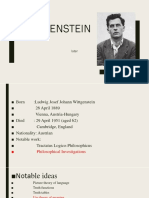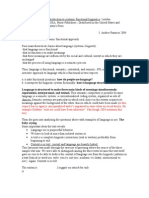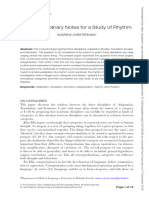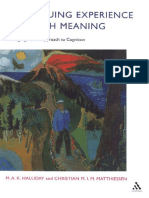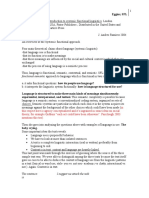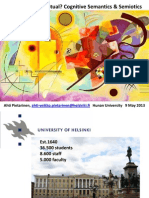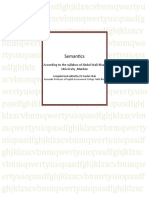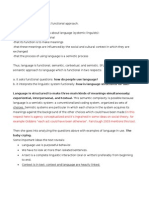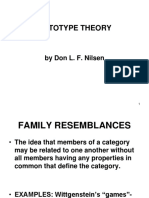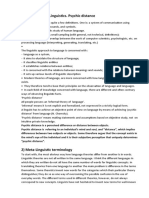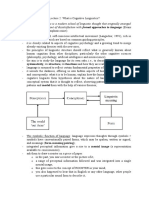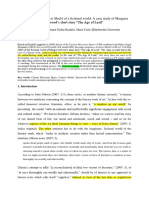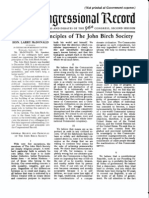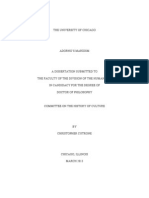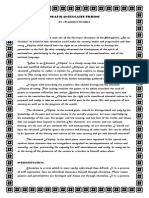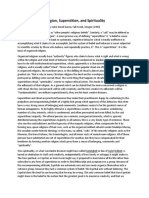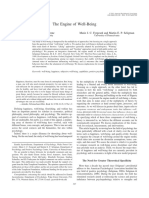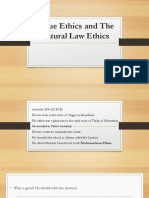Lecture 3: What are the roots of Cognitive Linguistics?
Cognitive linguistics is also firmly rooted in the emergence of modern cognitive
science in the 1960s and 1970s, particularly in work relating to human
categorisation, and in earlier traditions such as Gestalt psychology (Evans & Green,
2006:3; emphasis mine).
- cognitive linguists believe that not only does the structure of language is systemic, but
also that it reflects the systemic structure of thought (Evans & Green, 2006: 14);
certain language expressions provide evidence that the structure of our conceptual
systems is reflected in the patterns of language;
o conceptual domain is a body of knowledge within our conceptual system that
contains and organises related ideas and experiences, e.g., TIME relates to a
range of conceptual concepts including Christmas, which is a temporal event;
o Christmas is fast approaching. [TIME] + [MOTION] domains > Christmas is
conceptualised in terms of the domain of physical motion, which is evident in
the use of the world approaching. Though, it cannot be literally said that
Christmas undergo motion. These fundamental conceptual domains enable us
to understand abstract phrases in more concrete terms – terms that are closer to
our experience.
o Question: Where do conceptual domains come from?
Exercise: The examples below contain linguistic expressions that express abstract concepts.
In the light of our discussion of the examples in (11), identify the relevant conceptual domain
that the concept might relate to. Do these abstract concepts appear to be understood in terms
of concrete physical experiences? What is the evidence for your conclusions?
(a) You’ve just given me a really good idea.
(b) How much time did you spend on this essay?
(c) He fell into a deep depression.
(d) The Stock Market crashed on Black Wednesday.
(e) Unfortunately, your argument lacks a solid foundation.
Now come up with other sentences which illustrate similar patterns for the following
conceptual domains.
(f) THEORIES
(g) LOVE
(h) ARGUMENT
(i) ANGER
(j) KNOWING/UNDERSTANDING
Human categorisation:
o Categorisation is not criterial. It is not an ‘all-or-nothing’ affair. Instead,
human categories often appear to be fuzzy in nature, with some members of a
category appearing to be more central and others more peripheral. Moreover,
� degree of centrality is often a function of the way we interact with a particular
category at any given time. Which of these images is the most representative
illustrations of the category CUP? Why?
Some of these representations may be rated as being more or less representative of the
category CUP. They may or may not resemble each other in a variety of ways. Although they
vary in terms of how representative they are, they are clearly related to another. Categories
that exhibit degrees of centrality, with some members being more or less like other members
of a category
rather than sharing a single defining trait, are said to exhibit family resemblance.
The same features apply to linguistic categories like morphemes and words. In other words,
linguistic categories – whether they relate to phonology, syntax or morphology – all appear to
exhibit these phenomena.
Exercise: The philosopher Wittgenstein famously argued that the category GAME exhibits
family resemblance. To test this, first make a list of as many different kinds of games as you
can think of. Now see if there is a limited set of conditions that is common to this entire list
(‘necessary’ conditions) and sufficient to distinguish this category from other related
categories (‘sufficient’ conditions) like competitions, amusement activities and so on. Do your
conclusions
support or refute Wittgenstein’s claim? Now see if you can identify the ways in which the
different games you list share family resemblance ‘traits’. Try to construct a ‘radial’ network
showing the degrees of family resemblance holding between games of different kinds. A
radial network is a diagram in which the most/more prototypical game(s) is/are placed at the
centre and less prototypical games are less central, radiating out from the centre.








